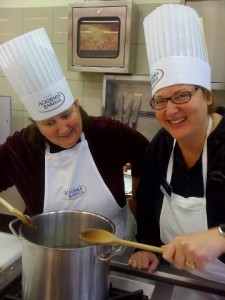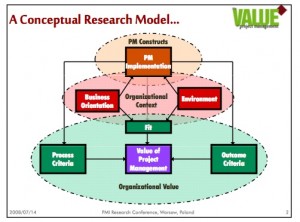Peachy Keen (Why eating in season makes delicious sense!)
Tuesday, August 30th, 2011A few years ago, my husband planted several apple, pear and peach trees on a sloped, sunny spot alongside our garden in the backyard. We’d dream of the day when we could pick our own fresh fruit right from the tree – for free! The first year, we got nothing, nada, zilch – Did we do something wrong? Were these dud trees or something? Perhaps they were too young to bear fruit?
The next year, the trees grew larger and we started to get tiny little red pears on one of them. They were so cute! A few days later, due to the dry weather, the tree snapped in half and all the little pears fell and never made it to ripeness. The following year, a herd of deer (or something!) had a field day and devoured pretty much all of our fruit and most of our garden for that matter while we were on vacation – tomatoes and everything – GONE!
So this year, we were not even going to get our hopes up – we pretty much gave up and were content with looking at our pretty, bare trees, feeding the wildlife, without tasting the fruit ourselves. Until one summer day in early August, there they were! Beautiful, yellow, red and orange colored (albeit smaller than store bought) PEACHES!!! Finally!!!
We picked a dozen or so and they were DEE-VINE! I’ve only picked and eaten apples and pears from PYO picking orchards before – the taste and juiciness of our peaches were amazing! The natural fruit enzymes of the peaches popped in my mouth they were so fresh and alive. We decided to make a peach cobbler, found a recipe online and tweaked some ingredients to make it a little healthier. Our first, fresh Peach Cobbler was, to quote Rachael Ray, DEE-LISH!
Our fruit tree experience reminded me of the benefits of eating seasonally, locally and from your back yard (if possible). The taste, cost, nutritional value and personal satisfaction of that peach cobbler couldn’t be bought anywhere! It took some patience, yes (a few years!), but it was so worth it!
Oh, and before I share the Peach Cobbler recipe, let me share a little bit more of our peach story. We decided to let the other 30 or so peaches that remained on the trees ripen and grow a little larger, so we left them alone for a few days. Can you take a guess at what happened?
We came home from a weekend away and found that we were robbed again!! The herd of deer (or whatever “it” was/”they” were), sauntered in the backyard and ate them all – not one peach was left for us to enjoy! (On the bright side, at least they left the tomatoes this time.) The lesson learned was that you have to strike while the iron’s hot and harvest as soon as nature’s bounty is ready — or someone (or something) else will!
Here’s an easy Peach Cobbler recipe from Whole Foods. I use most recipes as a template – feel free to substitute ingredients to suit your taste and dietary preferences:
Ingredients
6 cups peeled and sliced fresh peaches (we had about 8 cups of peaches)
1 3/4 cups flour (we used Gluten Free)
6 tablespoons sugar (we used about 4 T of Xylitol/Birch bark natural sweetener)
2 teaspoons almond extract (we used 1 t vanilla)
Zest and juice of 1 lemon
10 tablespoons butter, cut into small pieces and chilled, divided (we used 5T)
1 tablespoon baking powder
1/2 teaspoon salt
3/4 cup half-and-half (we used almond milk)
Method
Preheat oven to 375°F.
In a large mixing bowl, combine peaches, 1/4 cup of the flour, 2 tablespoons of the sugar, almond extract and lemon zest and juice. Pile mixture into a 10-inch baking dish or pie plate, then dot with 2 tablespoons of the butter; set aside.
In another bowl, combine remaining 1 1/2 cups flour, 2 tablespoons of the remaining sugar, baking powder and salt. Using a pastry cutter, two knives or your fingers, work butter into flour mixture until it resembles coarse meal. Add half-and-half and lightly toss together until a soft dough forms. Drop dough by the tablespoon onto peaches until surface is almost covered. Lightly pat down dough to evenly distribute over the top, but leave spaces for the peaches to show through. Sprinkle with remaining 2 tablespoons sugar and bake for about 40 to 45 minutes, or until top is golden and peaches are bubbling.
Nutrition
Per serving (221g-wt.): 330 calories (120 from fat), 13g total fat, 8g saturated fat, 4g protein, 50g total carbohydrate (2g dietary fiber, 31g sugar), 40mg cholesterol, 290mg sodium
Enjoy!
About the Author: Evelyn DeDominicis is a certified Holistic Health Coach and Workplace Wellness Consultant whose intention is to guide individuals and organizations on their journey to living in optimal, sustainable health and life balance. She offers 1:1 coaching, group coaching, cooking classes and wellness consulting to individuals and organizations. Evelyn recently joined the Cheetah family to launch Cheetah Wellness – a unique wellness education and behavior change approach using Cheetah’s Accelerated Learning and Project Management techniques. You can learn more about Evelyn at www.evelynwellness.com and more about Cheetah at www.cheetahlearning.com.









